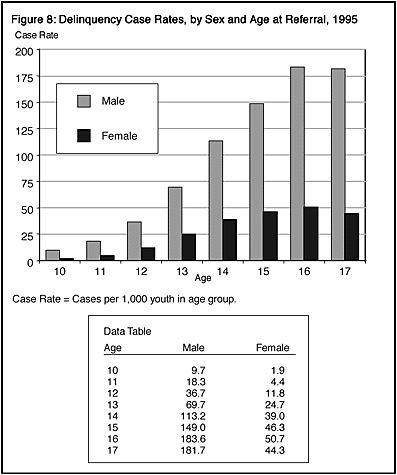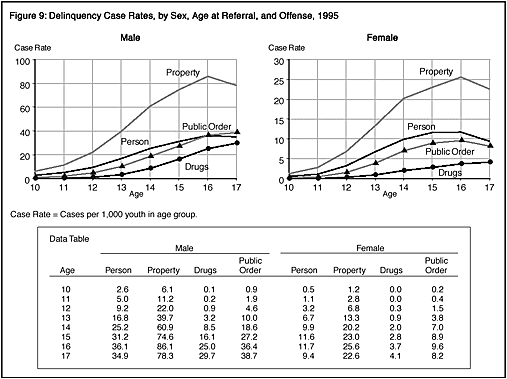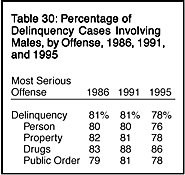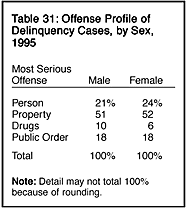|
Sex
Between 1986 and 1995, the volume of delinquency cases involving males increased 40%, while the volume of cases involving females increased 68% (table 32). Both males and females showed considerable growth in the number of person offense cases (87% and 146%, respectively). Among males, the largest percent change was in drug offense cases (up 128% between 1986 and 1995). Among females, drug offense cases increased 80%.  In 1995, the delinquency case rate for males was more than 3 times greater than the rate for females -- 92.4 compared with 27.3 cases per 1,000 youth at risk. In 1986, however, the male case rate was 4 times greater. Between 1986 and 1995, the relative change in delinquency case rates was greater for females than for males in both person and property offense cases. The per capita rate of person offense cases involving females increased 126%, compared with 71% for males. The rate of property offense cases increased 38% for females and 7% for males. On the other hand, the rate of drug offense cases increased more for males (109%) than for females (65%). In 1995, both male and female delinquency case rates generally increased through age 16, before declining among 17-year-olds (figure 8). Male case rates increased continuously with age in two of the four delinquency offense categories -- drug law violations and public order (figure 9). The drug offense case rate for females also increased continuously through age 17.  
|

